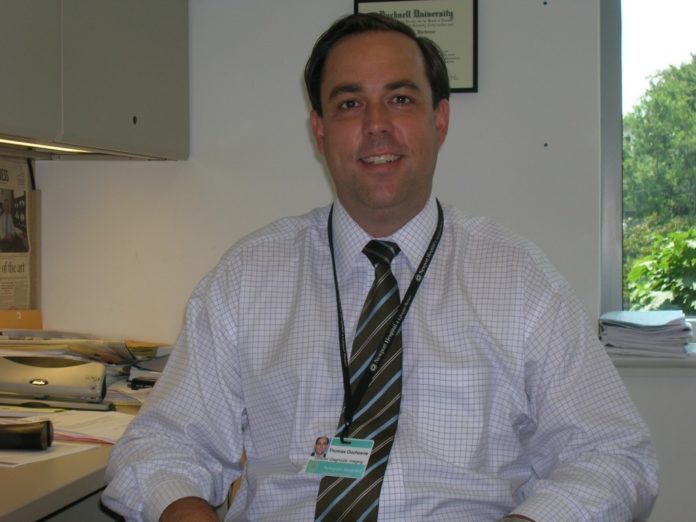
Newport Hospital recently opened a new diagnostic imaging facility in Portsmouth to serve residents of northern Newport County and ease some of the pressure on the hospital’s facility, which was operating at full capacity.
The Portsmouth Imaging Center, at 69 Turnpike Ave., has a 1.5-Tesla open-ended MRI, a 16-slice CT scanner, digital mammography, ultrasound and X-ray gear. Providence Business News spoke with Tom Duchesne, director of diagnostic imaging at the hospital, about the growing demand for imaging services.
PBN: How busy is the hospital’s main facility?
DUCHESNE: The demand for computed tomography (CT) and magnetic resonance imaging (MRI) services has vastly increased over the last three to five years.
At Newport Hospital, we have one 16-slice CT scanner that the R.I. Department of Health has identified as the most heavily utilized in the state, with 16,563 procedures performed in 2007. We were struggling to accommodate the needs of outpatients as well as inpatients and emergency patients.
Similarly, Newport Hospital has one 1.5-Tesla MRI unit that DOH identified as the second-most utilized scanner in the state, with 6,110 procedures performed in 2007. This represents a 10-percent increase from 2004. As with CT, we were struggling to accommodate outpatients with our single unit, so were scheduling patients as late as 11 p.m. for non-emergent studies.
PBN: What do you think is driving the growth in high-end diagnostic imaging?
DUCHESNE: To put it simply, advances in imaging technology enable physicians to diagnose and treat illness and disease more accurately. These advanced diagnostic tools, such as CT and MRI, assist the physician in providing the highest level of care, and that is why clinicians are utilizing them and why we are seeing the growth in demand.
PBN: Your new facility has really powerful equipment. What kind of difference can, say, the 16-slice CT scanner make in diagnostics, versus older and less powerful equipment?
DUCHESNE: There are two areas where a high-end imaging unit differentiates itself from the competition: speed and clarity of the image. A 16-slice CT is capable of acquiring hundreds of images in a short period of time, whereas older single-slice models were slower, and images were of lesser quality. This advance translates to shorter scanning times for patients and enables the physician to quickly diagnose the problem.
PBN: You are also offering digital mammography. Have you gone all-digital, and is there a growing demand for digital mammography from patients?
DUCHESNE: Yes, we are proud that the hospital and the Portsmouth Imaging Center are fully digital in all imaging modalities, including mammography. We purchased three top-of-the-line digital mammography units from GE Healthcare, two for the hospital and the third for the Portsmouth center. The difference in image clarity between traditional and digital mammography is astounding. … Patients are becoming more knowledgeable about advances in the health care industry, and we see a growing number of women ask specifically if we have digital mammography services.
PBN: You’re also bringing high-end imaging closer to some of your patients’ homes. How big of an impact will that make?
DUCHESNE: Newport Hospital’s location can pose challenges for patients who wish to receive outpatient imaging services such as a screening mammogram. Patients from the northern end of Aquidneck Island as well as the other communities in the East Bay have been asking for a facility that is closer to home and offers convenient hours and parking.
This new facility will enable Newport Hospital to better meet the growing demand by reducing wait times and providing an alternative environment for patients to receive these services.
In addition, having an a second facility allows us to provide very important community services to a larger population. One example is our involvement with the state Women’s Cancer Screening Program, which provides breast screening services for uninsured women. Newport Hospital is now able to offer this important service to patients at both facilities.
For more information about Newport Hospital, a member of the nonprofit Lifespan health care network, visit www.lifespan.org/newport.










